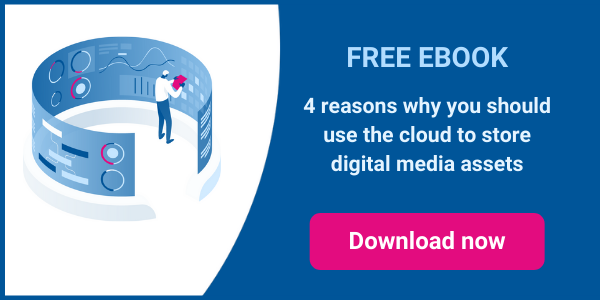Using Artificial Intelligence (AI) to obtain insights from video and images is a new approach to getting more value from your media content, more easily.
With Google's Video AI and Vision AI solutions, you can automatically tag and classify videos and images into thousands of categories and make them searchable and accessible for users. You can also transcribe video and image content to make videos easier to find or so that you can create subtitles more easily and quickly. With Google's AutoML, you can extend the capabilities of Video AI and Vision AI even further, by building and training custom models to meet your specific needs, even if you don’t have significant expertise in machine learning.Related posts
What is video Intelligence — and why you need it?
We’re currently talking to companies who are interested in using AI for tasks diverse as:
- making it easier for users to locate media, allowing them to complete work tasks more quickly
- getting more out of their marketing budget by re-using content created in different territories in global social media campaigns
- improving profits when monetising archives of unique digital videos and images
- categorising and rating user-generated video content, such as images and videos added to customer reviews, to allow explicit content to be automatically identified and correctly handled
When we work with customers like these on video and vision intelligence projects, there are 5 questions we ask them to think about:
- What business issues are you trying to solve? For example, do you want to make content searchable and easier to find, automatically create subtitles for your videos, or flag up explicit content so you handle it appropriately? By understanding your challenges and objectives, we can help you design and develop a solution that generates the right metadata from your content to meet your needs.
- Where is your video and image content currently stored? Is it held on file servers, in the cloud or on local hard disks and laptops? And where do you want to store it? There are pros and cons to both keeping it where it is and moving it all to the cloud.
- What specific content do you want to apply Video AI and Vision AI to? How much of it is there? What format is it in? How is it growing and how often do you need to tag, categorise and index it?
- Where, when and how do you want people to use that content and how does it fit into their workflow? By feeding the video and vision intelligence you’ve extracted from your content into a custom user interface or custom app, you can help users work with content and get the job done more quickly and easily.
- How do you want to manage the solution? We can support your team as they develop an in-house solution or work closely with you to provide a managed service where we’re responsible for deployment, daily management and ongoing change management.
If you’d like to find out more about how video and vision intelligence could benefit your business, read our guide to using video and vision intelligence to get more value out of videos and images or come and talk to the experts in our GCP team.

